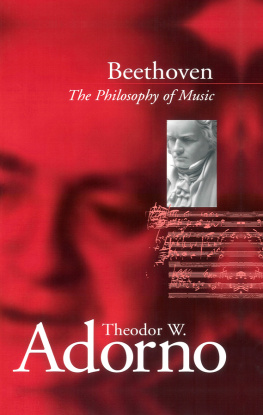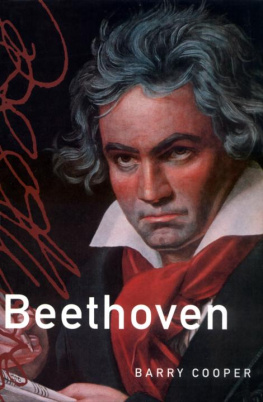

Published in 2012 by Elliott & Thompson Ltd
27 John Street, London WC1N 2BX
www.eandtbooks.com
ISBN: 9781907642791
EPUB ISBN: 9781908739889
Text copyright John Suchet The Author has asserted his right under the Copyright, Designs and Patents Act, 1988, to be identified as Author of this Work.
All rights reserved. No part of this publication may be reproduced, stored in or introduced into a retrieval system, or transmitted, in any form, or by any means (electronic, mechanical, photocopying, recording or otherwise) without the prior written permission of the publisher. Any person who does any unauthorized act in relation to this publication may be liable to criminal prosecution and civil claims for damages.
9 8 7 6 5 4 3 2 1
A CIP catalogue record for this book is available from the British Library. Printed and bound in Italy by Printer Trento
Designed by James Collins
Every effort has been made to trace copyright holders for extracts used within this book. Where this has not been possible, the publisher will be happy to credit them in future editions.
Front cover: The bust made from the life mask by Franz Klein is the most accurate representation we have of Beethovens features.
For my children, grandchildren,
and their children, safe in the knowledge
that all will know Beethovens music
PREFACE
This is an account of Beethovens life, in accordance with current scholarship and research. Given that new facts and information emerge constantly, there are some aspects of this book that will inevitably become outdated or even prove incorrect. This is true of all biographies of great figures. I have not let it deter me from setting down the life as we perceive it today.
I make no great claim to having unearthed previously undiscovered facts about Beethovens life. Everything in this book has been published in source material or previous biographies. But I do believe that a substantial amount of the information I have included, particularly about his childhood, has not been published for many decades, in some cases for a century or more, and I am certain never in English.
Beethovens childhood and teenage years, I believe, were the making of him as a man and musician. For that reason I have examined them closely, and some of his experiences I have recounted in forensic detail. His trip with the court orchestra up the Rhine, for instance, rarely merits a mention in biographies, or is accorded at most a line or two, yet it provided the youthful Beethoven with a bank of memories and a physical artefact that he treasured for life.
Of Beethoven it is perhaps more true than of any other composer that if you know what is going on in his life you listen to his music through different ears. Beethovens life its dramas, conflicts, loves and losses, his deafness coupled with continuous health problems, his epic struggle with his sister-in-law for custody of her son, his nephew is there in his music. Without such knowledge his music is still extraordinary, and I believe many people who today love it do so without any deep understanding of his life. But to know what is happening to him at the time of a particular composition puts that work on a different level for the listener. Beethovens music is his autobiography.
My approach to the life of this great artist, as in my previous publications on him, is that of enthusiast and lover of his music, rather than musicologist. Consequently this book is aimed primarily at like-minded people, though I hope the academics will give it their approval. It is, for instance, of more interest to me that Beethoven initially dedicated the Eroica Symphony to Napoleon Bonaparte than that he chose to write it in E flat. At all times I have striven to set the music into the context of his life, to explain where he was living at the time of a particular composition, why he chose to write it, the reasons behind the dedication, the state of his health, his non-musical activities, rather than present an analysis of the movement structure, key signature, thematic links.
In a nutshell I have tried to portray a difficult and complex character, struggling to continue his profession as musician despite increasing deafness, alienating friends with unprovoked outbursts of anger one moment, overwhelming them with excessive kindness and generosity the next, living in a city in almost constant turmoil because of war with France, rather than the godlike immortal portrayed in statues and paintings in heroic pose garlanded with laurel leaves.
He might have been one of the greatest artists who ever lived, but he was a still a man who had to live among fellow mortals, eat and drink, buy clothes, pay his rent. That is the Beethoven of this book.
PROLOGUE
In the early afternoon of 29 March 1827 thousands of people flocked towards the Altes Schwarzspanierhaus, as word spread across Vienna that Beethoven had died. Their numbers grew, and soon they thronged the courtyard of the building to such an extent that the gates had to be closed. They crowded along the Alsergasse and spilled onto the green Glacis that sloped up to the Bastei, the city wall. Soon there was barely space between Beethovens residence and the Votivkirche, where the Funeral Mass was to be held.
On the second floor of the Schwarzspanierhaus, inside Beethovens apartment, a small group of men made final adjustments to the polished oak coffin and the corpse it contained. Beethovens head, adorned with a wreath of white roses, lay on a white silk pillow. It was a grotesque sight, belying the identity of Europes most revered composer. The temporal bones, along with the auditory nerves, had been removed at post-mortem for further investigation, leaving the joint of the lower jaw with no support. The famously leonine face, with strongly defined jawbone, was distorted almost beyond recognition.
Into the folded hands a wax cross and a large lily were placed. Two more large lilies lay on either side of the body. Eight candles burned alongside the coffin. On the table at the foot of the coffin stood a crucifix, holy water for sprinkling, and ears of corn. At 3 p.m. the coffin was closed, and the group prepared to move it down the staircase and out into the courtyard.
By this time the crowd had grown restless. Soldiers from the nearby barracks were drafted in to keep order. There was a fear that the horses could be frightened or, worse, that the coffin could be disturbed. The soldiers cleared the courtyard and the gates were again closed. As the coffin was brought out of the building, the crowd surged forward, but the gates, soldiers on the inner side, held firm. As nine priests offered blessings and the Italian court singers intoned a funeral song, a heavy pall was spread over the coffin and a large wreath laid on the embroidered cross.
When everything was ready, the gates were opened, but the crowd surged forward again, overwhelming the soldiers. They pushed against the bier, dislodging the pallbearers and chief mourners. It took several minutes to restore order. Eight Kapellmeisters, four on each side, took hold of the pall with one hand, a candle wrapped in crepe in the other. On both sides of them stood around forty torchbearers. Behind the coffin were the chief mourners, close friends and family; in front of it musicians, civic dignitaries, and the clergy.
The order was given, the four horses took the strain, and amid a clatter of chains and a cacophony of hooves, the procession moved off. Vienna, for so many centuries capital of the Holy Roman Empire, seat of the Holy Roman Emperor, had never seen scenes like it, nor had so many thousands of people ever thronged its streets.
Next page















